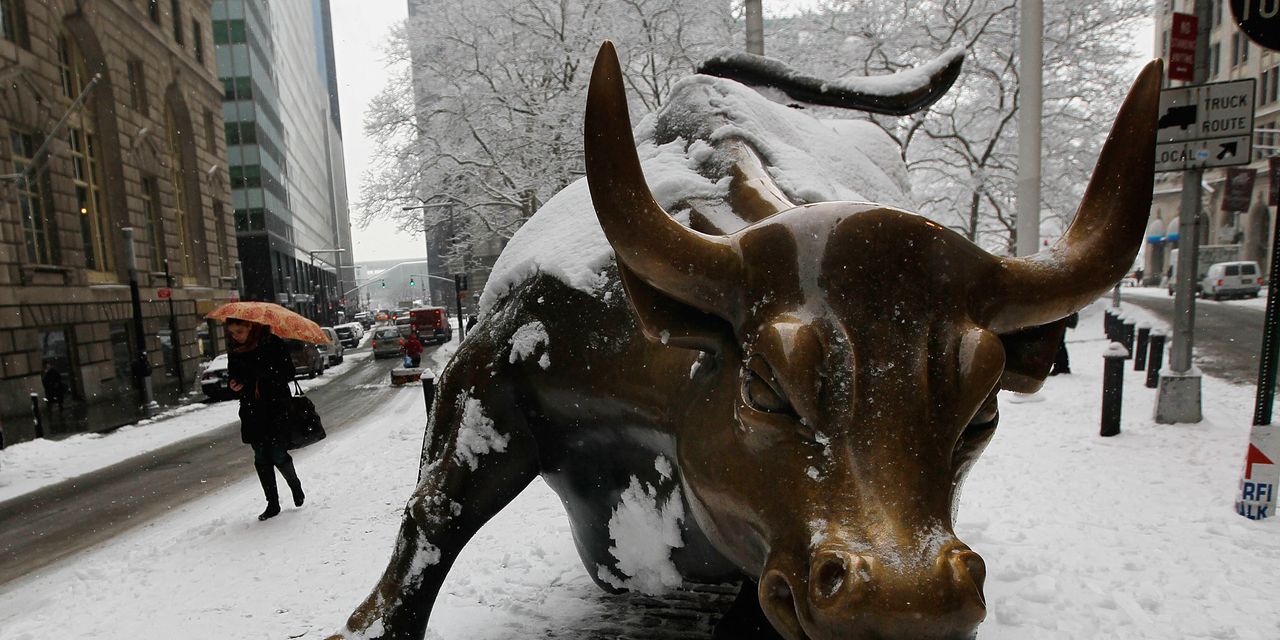The stock market’s long-term prospects have improved enough in recent months that they can now be graded as “average.”
That’s a lot better than what prevailed at the beginning of this year. In fact, given this year’s bear market, an “average” gain looks awfully attractive.
This upbeat assessment is based on where the market stands relative to its long-term trend. At its October low, it stood quite close to being on top of a trendline based on the stock market’s inflation-adjusted total return back to 1871.

That doesn’t guarantee that the stock market won’t go lower. As you can see from the accompanying chart, above, the market often, though not always, overshoots to the downside after occasions in which it previously was significantly above that trendline.
Still, it is a source of some solace that this trendline is no longer exerting a gravitational pull on the market. (Note from the chart that, given the rally over the last half of October, the market is now slightly above its trendline. It was much closer to that trendline at its Oct. 12 low.)
Drawing trendlines is an art as much as science, which is one reason why I don’t include a trendline indicator in the table of valuation indicators that I present each month in this space. (For that information, see the table below.)
For example, if I had instead drawn the accompanying chart’s trendline based on the price-only version of the S&P 500
SPX,
then the current market would be deemed more than double its long-term trendline — significantly overvalued, in other words, despite this year’s decline.
For what it’s worth, however, I do believe that the accompanying chart’s data series is the proper one to use to derive a trend. If this approach is to have any theoretical significance, the trendline must be based on the compensation that the capital markets provide for incurring risk. Adjusting for dividends and inflation must be part of that compensation.
What does it mean that this trendline analysis suggests that the stock market’s long-term prospects are now “average”?
Since 1871, according to data compiled by Yale University finance professor Robert Shiller, the stock market has produced a total return above inflation of 6.85% annualized. Insofar as the future is like the past, this suggests that equity positions established today will eventually — over the long term — beat inflation by a similar amount.
That’s definitely good news.
Valuations don’t support a new bull market
In the meantime, the table below shows how each of my eight valuation indicators stacks up against its historical range.
As you can see from the column comparing current valuations to those prevailing at the end of last year, today’s market valuations are significantly more attractive.
| Latest | Month ago | Beginning of year | Percentile since 2000 (100 most bearish) | Percentile since 1970 (100 most bearish) | Percentile since 1950 (100 most bearish) | |
| P/E ratio | 19.94 | 18.78 | 24.23 | 37% | 60% | 70% |
| CAPE ratio | 28.12 | 26.53 | 38.66 | 69% | 79% | 85% |
| P/dividend ratio | 1.72% | 1.82% | 1.30% | 74% | 82% | 87% |
| P/sales ratio | 2.29 | 2.16 | 3.15 | 90% | 90% | 90% |
| P/book ratio | 3.80 | 3.58 | 4.85 | 90% | 86% | 86% |
| Q ratio | 1.61 | 1.51 | 2.10 | 80% | 89% | 92% |
| Buffett ratio (Market cap/GDP ) | 1.51 | 1.42 | 2.03 | 87% | 94% | 94% |
| Average household equity allocation | 44.8% | 44.8% | 51.7% | 85% | 88% | 91% |
Mark Hulbert is a regular contributor to MarketWatch. His Hulbert Ratings tracks investment newsletters that pay a flat fee to be audited. He can be reached at [email protected].



